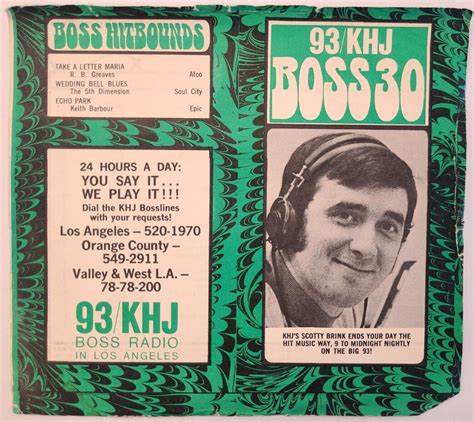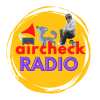
A Look Back at a Revolutionary Format
In the annals of radio history, few formats have left as indelible a mark as Boss Radio. This innovative approach to broadcasting, which dominated the airwaves from the mid-1960s through the 1970s, revolutionized the way stations programmed music and engaged with their audiences. As we reflect on this transformative era in 2025, it’s clear that the impact of Boss Radio continues to resonate with broadcasters and listeners alike.
The Birth of a Radio Revolution
The Boss Radio format emerged in the early 1960s as a response to the changing landscape of popular music and listener preferences. Its architects, Bill Drake and Gene Chenault, saw an opportunity to streamline and energize the Top 40 format, creating a high-energy, tightly formatted approach that would captivate audiences across the nation.
Drake, a programming wunderkind from Georgia, partnered with station owner Gene Chenault to develop a formula that emphasized tight playlists, minimal DJ chatter, and a fast-paced presentation. This partnership would prove to be the catalyst for a radio revolution.
KHJ: The Flagship of Boss Radio
The true test of the Boss Radio format came in 1965 when Drake and Chenault were tasked with revitalizing KHJ in Los Angeles. At the time, KHJ was struggling in the ratings, but under the guidance of program director Ron Jacobs and a team of talented DJs, including Robert W. Morgan and The Real Don Steele, the station underwent a remarkable transformation.
Within months of implementing the Boss Radio format, KHJ skyrocketed to the top of the Los Angeles ratings, setting the stage for a nationwide expansion of the format. The success of KHJ became a blueprint for stations across the country, eager to replicate its winning formula.
The Boss Radio Sound
What made Boss Radio so distinctive? Several key elements contributed to its unique sound and appeal:
Streamlined playlists focusing on the biggest hits
Brief, punchy DJ commentary
High-energy jingles produced by the Johnny Mann Singers
Tight production and precise timing of all broadcast elements
Strategic placement of news, commercials, and features
This carefully crafted formula created a sense of momentum and excitement that kept listeners tuned in and coming back for more.
The Spread of a Format
Following KHJ’s success, the Boss Radio format quickly spread to other markets. Notable stations that adopted the format included KFRC in San Francisco, WRKO in Boston, and CKLW in Windsor, Ontario (serving Detroit). Each of these stations saw significant ratings improvements after implementing the Boss Radio format.
The Boss Jocks: Radio’s New Superstars
Central to the Boss Radio format was the concept of the “Boss Jock” – a new breed of radio personality that combined tight professionalism with magnetic charisma. DJs like Robert W. Morgan, The Real Don Steele, and Machine Gun Kelly became household names, their voices instantly recognizable to millions of listeners.
Promotions and Contests: Engaging the Audience
Boss Radio stations were known for their innovative and often outrageous promotions and contests. These events helped to create a strong bond between the stations and their listeners, while also generating significant publicity. From giving away houses and cars to hosting local talent competitions, Boss Radio stations became an integral part of their communities.
The Music Industry Connection
The influence of Boss Radio extended beyond the airwaves and into the music industry itself. The format’s tight playlists and heavy rotation of hit songs could make or break a record’s success. As a result, record labels and artists cultivated close relationships with Boss Radio programmers and DJs, recognizing the power of the format to shape popular music tastes.
The Legacy of Boss Radio
While the heyday of Boss Radio began to wane in the late 1970s and early 1980s, its impact on the radio industry has been long-lasting. Many of the programming principles developed by Drake and Chenault continue to influence radio formats today. The emphasis on tight playlists, consistent branding, and strategic placement of non-music elements remains a cornerstone of successful radio programming.
Lessons for Today’s Broadcasters
For current radio professionals, the Boss Radio phenomenon offers several valuable lessons:
The power of a cohesive brand identity
The importance of adapting to changing listener habits
The value of personality in an era of automation
The role of community engagement
The symbiotic relationship between radio and the music industry
As we look back on the Boss Radio era from our vantage point in 2025, it’s clear that the principles that made it successful – innovation, adaptability, and a deep understanding of audience preferences – remain as relevant as ever. The legacy of Bill Drake, Gene Chenault, and the Boss Jocks who brought their vision to life continues to inspire and inform broadcasters around the world.
In an era of fragmented media and endless entertainment options, the story of Boss Radio serves as a reminder of radio’s unique power to unite listeners through music, personality, and shared experiences. For those who experienced it firsthand and for new generations discovering its impact, Boss Radio remains a high-water mark in the history of broadcasting – a time when radio truly was the boss.
Written by: studio
Similar posts
Recent Comments
No comments to show.-

Retro Rewind
With Kenneth Dell
For every Show page the timetable is auomatically generated from the schedule, and you can set automatic carousels of Podcasts, Articles and Charts by simply choosing a category. Curabitur id lacus felis. Sed justo mauris, auctor eget tellus nec, pellentesque varius mauris. Sed eu congue nulla, et tincidunt justo. Aliquam semper faucibus odio id varius. Suspendisse varius laoreet sodales.
close Top popular
© Copyright 2025 Aircheck Radio - is a proud listener supported 501(c)(3) nonprofit organization










